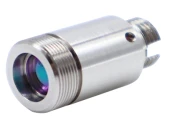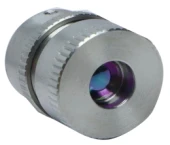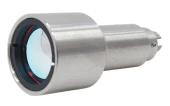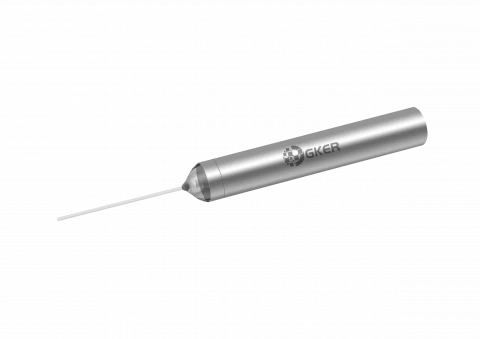Description
The GKER Photonics Dual Fiber Collimator (GK-C Series) is an essential component in advanced fiber optic systems, designed for integration into in-line fiber optics components such as isolators and Dense Wavelength Division Multiplexers (DWDM). This collimator is engineered with precision to ensure low insertion loss and high return loss, optimizing the performance of your optical systems. Its advanced anti-reflective (AR) coating and unique processing techniques enable it to handle high optical power, making it ideal for both transmission and reflection applications.
With center wavelengths available at 1310 nm, 1550 nm, or custom specifications, the GK-C Series Dual Fiber Collimator offers flexibility to meet diverse application needs. It supports various working distances and provides exceptional performance with a typical insertion loss as low as 0.20 dB at 23°C. The collimator is compatible with SMF-28 fiber and operates reliably in a wide temperature range from -5°C to +70°C, ensuring stability in different environmental conditions.
Available in both transmission and reflection types, the GK-C Series is customizable with options for lens diameter, holder type, connector type, fiber jacket, fiber length, and working type. This makes it a versatile solution for various applications in optical communication systems, laser systems, and more.
1310 -1550nm Dual Fiber Collimator
Specifications
| Center Wavelength (λc): | 1310, 1550 or specified nm |
|---|---|
| Operating Wavelength Range: | λc ± 30 nm |
| Working Type: | Transmission Type Reflection Type - |
| Working Distance: | 5 - 10 11 - 30 31 - 50 0mm for G Lens, 2.4mm for C Lens mm |
| Typ. Insertion Loss @ 23 ℃: | 0.20 0.25 0.30 0.20 dB |
| Max. Insertion Loss @ 23 ℃: | 0.25 0.35 0.40 0.25 dB |
| Min. Return Loss @ 23 ℃: | 55 dB |
| Max. Optical Power: | 0.3,0.5.…3 W |
| Max. Tensile Load: | 5 N |
| Fiber Type: | SMF-28 Fiber - |
| Operating Temperature: | -5 to +70 ℃ |
| Storage Temperature: | - 40 to + 85 ℃ |
Features
- Low Insertion Loss: Delivers efficient signal transmission with typical insertion loss as low as 0.20 dB at 23°C
- High Return Loss: Ensures excellent signal reflection with a minimum return loss of 55 dB
- High Power Handling: Advanced AR coating allows the collimator to handle up to 3W of optical power
- Versatile Configuration: Available in transmission and reflection types with customizable options for lens, holder, and connector types
- Wide Operating Temperature: Reliable performance across a broad temperature range from -5°C to +70°C
Applications
- Optical Communication Systems: Enhances the performance of isolators and DWDM components in fiber optic networks
- Laser Systems: Ideal for integrating into high-power laser systems requiring precise collimation
- Industrial Automation: Supports automated optical systems with its robust design and high-power handling capabilities
Frequently Asked Questions
What is the typical insertion loss for the Dual Fiber Collimator?
What wavelengths are supported by the GK-C Series?
Can the collimator handle high optical power?
What is the minimum return loss for this collimator?
Is the collimator available in both transmission and reflection types?
What fiber types are compatible with the collimator?
What operating temperature range is supported?
Can the working distance be customized?
What connector types are available for this collimator?
Is there an option to specify the fiber jacket and length?
Similar Products












Your inquiry has been received.
Create an account by adding a password
Why create an account?
- Auto-complete inquiry forms
- View and manage all your past messages
- Save products to your favorites
- Close your account anytime — no hassle
